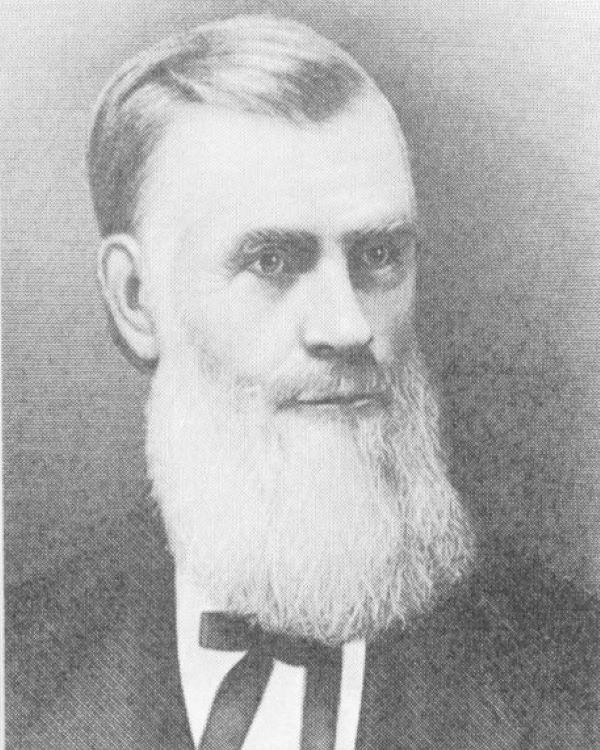Last updated: January 25, 2023
Person
William Gray

Whitman College
Born in New York in 1810, William Gray spent his youth as a carpenter but soon set his sights on missionary work. William was selected not as a missionary, but as a laborer, to accompany other missionaries to the Oregon Country in 1836. This perceived slight by William would be the beginning of years of turmoil between he and the missionary parties.
William Henry Gray was born on September 8, 1810, in Fairfield, New York. He started as a cabinet maker’s apprentice. William began his religious pursuits in 1831 when he joined the Presbyterian Church, at which his brother was a minister. After William decided to apply for a missionary position with the American Board of Commissioners of Foreign Missions (ABCFM), letters of recommendation were sent to the board. One of these letters described Mr. Gray as having “a confidence in his own abilities to a fault” but also as “a skillful mechanic.”1
William was selected to accompany Marcus and Narcissa Whitman and Henry and Eliza Spalding as a laborer at the ABCFM mission station to be established in Oregon Country in 1836. Mr. Gray began his journey to Liberty, Missouri, to rendezvous with the missionary party in early March of 1836.
The ABCFM party arrived at Fort Walla Walla on October 2, 1836. After Marcus Whitman had selected his mission location among the Cayuse. William was tasked with transporting supplies to begin construction on the mission house. He moved between Fort Walla Walla and the two mission stations for the winter, helping with construction tasks when he felt inclined to do so. Afterward, he announced plans to travel back east to the United States to petition the ABCFM for reinforcements for the Oregon mission. This was a surprise and disappointment to both Rev. Spalding and Dr. Whitman.
William returned to the mission in the fall of 1838 accompanied by his new bride, Mary Augusta Dix, and reinforcements: the Walkers, the Eellses, the Smiths, and Cornelius Rodgers. On the journey west, members of the reinforcement party became tired of William. By the time they arrived at the Whitman mission site, they refused to live at the same station as him. William wanted to establish a new mission among the Spokane People, but all five other men agreed that he lacked the qualifications necessary to do independent missionary work. Instead, William was assigned to live and work at the Spalding mission site.
Over the next few years, tensions between William and Henry Spalding increased, and William continued to petition to manage his own mission. Twice he attempted to leave the ABCFM and gain employment with the Hudson’s Bay Company at Fort Walla Walla but was unsuccessful Eventually, because of the infighting amongst the missionaries, the ABCFM made the decision to recall the Grays and Spaldings back to the United States and close both the Cayuse and Nez Perce mission stations in 1842. William, however, was still not satisfied with his position in the mission. He resigned and secured employment as Secular Agent and General Superintendent of the Oregon Institute, a Methodist school which later became Willamette University.
William Gray continued to be involved in the political processes of white settlement in Oregon Territory. He was a founder of the Oregon Pioneer Association in 1867. He spent his last years promoting the “Whitman Saved Oregon” myth and fundraising for a monument to honor the Whitmans, but died February 16, 1893, before the project was completed. In 1897, Walla Walla residents secured the funds, and the monument was dedicated and placed on top of the hill at the Whitman mission site where it remains today. In 1916, William and Mary Gray’s remains were moved from their original resting place in Astoria, Oregon, and reinterred next to the Great Grave at present-day Whitman Mission National Historic Site.
[1] Testimonial from Reverend Ira Pettibone to the ABCFM, 1836.
